Maoyin Chen
Autoencoder-assisted Feature Ensemble Net for Incipient Faults
Apr 22, 2024



Abstract:Deep learning has shown the great power in the field of fault detection. However, for incipient faults with tiny amplitude, the detection performance of the current deep learning networks (DLNs) is not satisfactory. Even if prior information about the faults is utilized, DLNs can't successfully detect faults 3, 9 and 15 in Tennessee Eastman process (TEP). These faults are notoriously difficult to detect, lacking effective detection technologies in the field of fault detection. In this work, we propose Autoencoder-assisted Feature Ensemble Net (AE-FENet): a deep feature ensemble framework that uses the unsupervised autoencoder to conduct the feature transformation. Compared with the principle component analysis (PCA) technique adopted in the original Feature Ensemble Net (FENet), autoencoder can mine more exact features on incipient faults, which results in the better detection performance of AE-FENet. With same kinds of basic detectors, AE-FENet achieves a state-of-the-art average accuracy over 96% on faults 3, 9 and 15 in TEP, which represents a significant enhancement in performance compared to other methods. Plenty of experiments have been done to extend our framework, proving that DLNs can be utilized efficiently within this architecture.
Continual learning-based probabilistic slow feature analysis for multimode dynamic process monitoring
Feb 23, 2022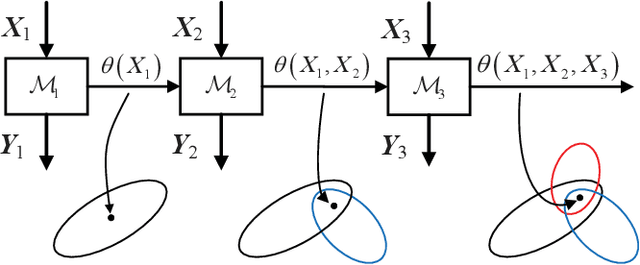
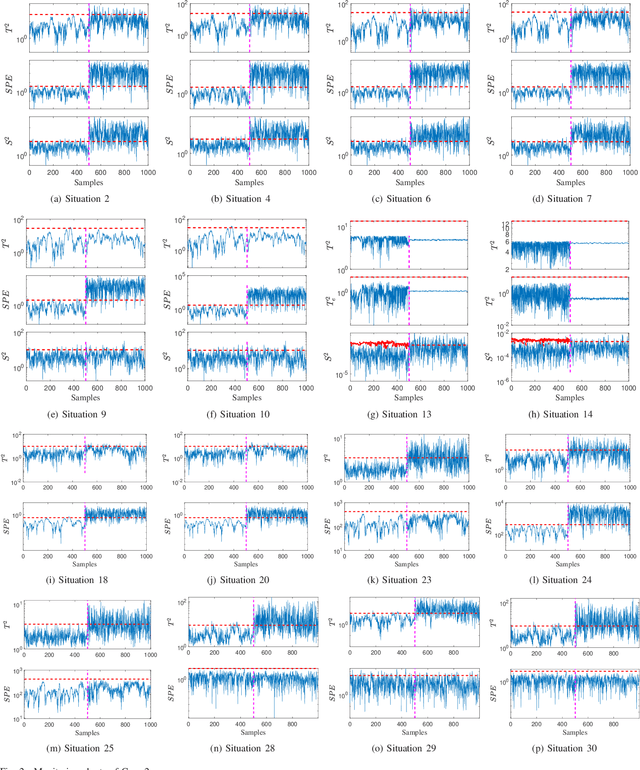
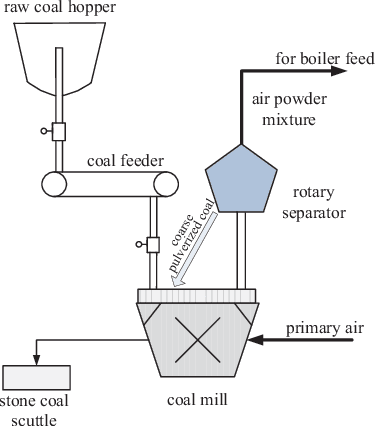
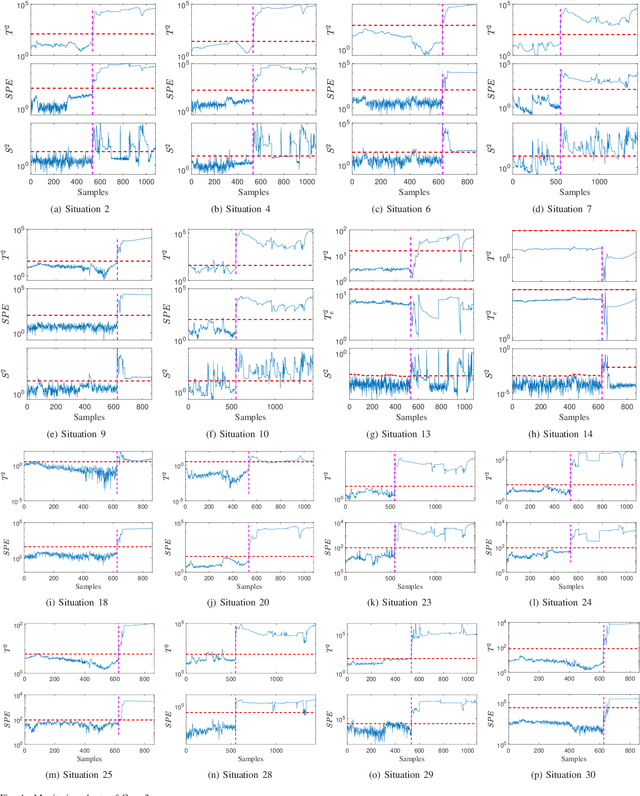
Abstract:In this paper, a novel multimode dynamic process monitoring approach is proposed by extending elastic weight consolidation (EWC) to probabilistic slow feature analysis (PSFA) in order to extract multimode slow features for online monitoring. EWC was originally introduced in the setting of machine learning of sequential multi-tasks with the aim of avoiding catastrophic forgetting issue, which equally poses as a major challenge in multimode dynamic process monitoring. When a new mode arrives, a set of data should be collected so that this mode can be identified by PSFA and prior knowledge. Then, a regularization term is introduced to prevent new data from significantly interfering with the learned knowledge, where the parameter importance measures are estimated. The proposed method is denoted as PSFA-EWC, which is updated continually and capable of achieving excellent performance for successive modes. Different from traditional multimode monitoring algorithms, PSFA-EWC furnishes backward and forward transfer ability. The significant features of previous modes are retained while consolidating new information, which may contribute to learning new relevant modes. Compared with several known methods, the effectiveness of the proposed method is demonstrated via a continuous stirred tank heater and a practical coal pulverizing system.
Self-learning sparse PCA for multimode process monitoring
Aug 07, 2021

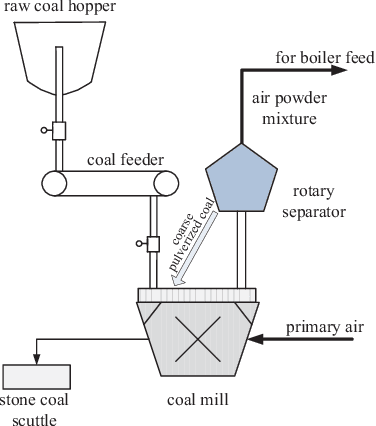
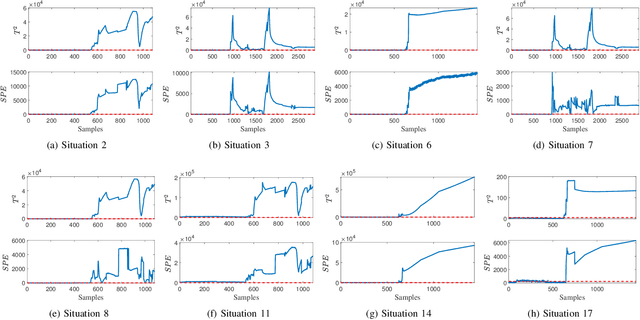
Abstract:This paper proposes a novel sparse principal component analysis algorithm with self-learning ability for successive modes, where synaptic intelligence is employed to measure the importance of variables and a regularization term is added to preserve the learned knowledge of previous modes. Different from traditional multimode monitoring methods, the monitoring model is updated based on the current model and new data when a new mode arrives, thus delivering prominent performance for sequential modes. Besides, the computation and storage resources are saved in the long run, because it is not necessary to retrain the model from scratch frequently and store data from previous modes. More importantly, the model furnishes excellent interpretability owing to the sparsity of parameters. Finally, a numerical case and a practical pulverizing system are adopted to illustrate the effectiveness of the proposed algorithm.
Monitoring nonstationary processes based on recursive cointegration analysis and elastic weight consolidation
Jan 21, 2021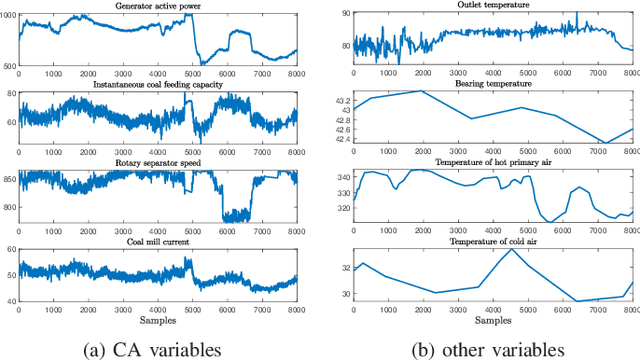
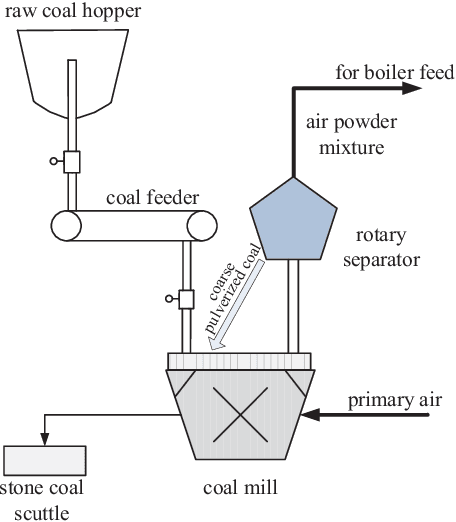
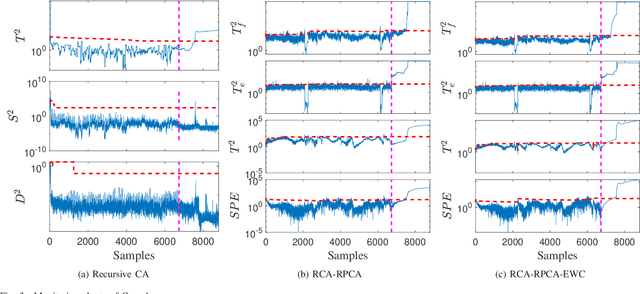
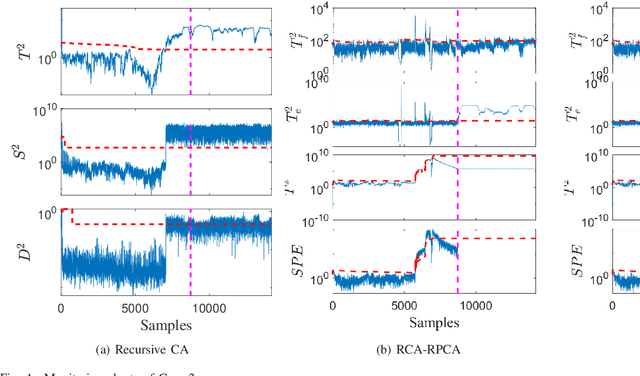
Abstract:This paper considers the problem of nonstationary process monitoring under frequently varying operating conditions. Traditional approaches generally misidentify the normal dynamic deviations as faults and thus lead to high false alarms. Besides, they generally consider single relatively steady operating condition and suffer from the catastrophic forgetting issue when learning successive operating conditions. In this paper, recursive cointegration analysis (RCA) is first proposed to distinguish the real faults from normal systems changes, where the model is updated once a new normal sample arrives and can adapt to slow change of cointegration relationship. Based on the long-term equilibrium information extracted by RCA, the remaining short-term dynamic information is monitored by recursive principal component analysis (RPCA). Thus a comprehensive monitoring framework is built. When the system enters a new operating condition, the RCA-RPCA model is rebuilt to deal with the new condition. Meanwhile, elastic weight consolidation (EWC) is employed to settle the `catastrophic forgetting' issue inherent in RPCA, where significant information of influential parameters is enhanced to avoid the abrupt performance degradation for similar modes. The effectiveness of the proposed method is illustrated by a practical industrial system.
Monitoring multimode processes: a modified PCA algorithm with continual learning ability
Dec 28, 2020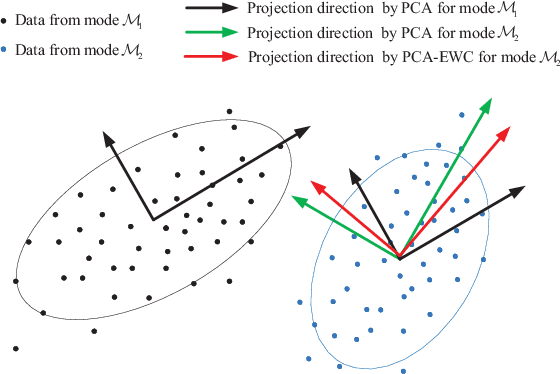
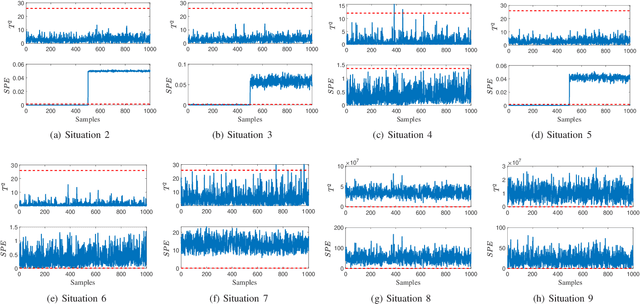
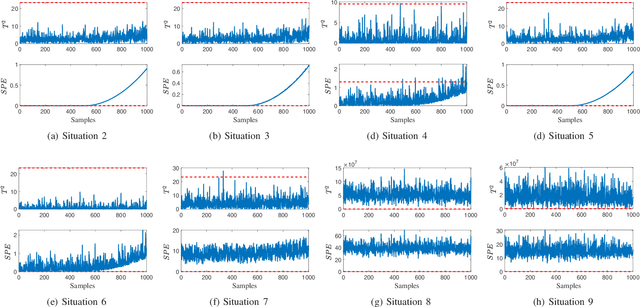
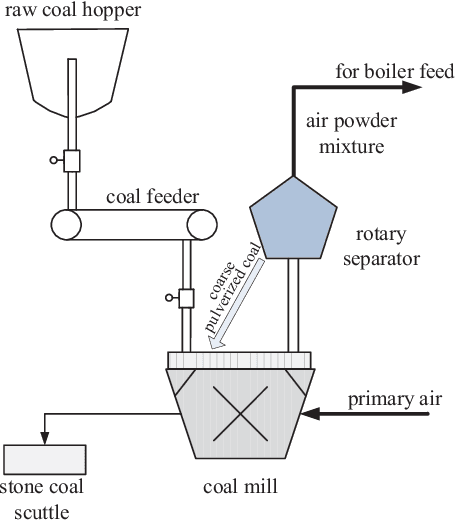
Abstract:For multimode processes, one has to establish local monitoring models corresponding to local modes. However, the significant features of previous modes may be catastrophically forgotten when a monitoring model for the current mode is built. It would result in an abrupt performance decrease. Is it possible to make local monitoring model remember the features of previous modes? Choosing the principal component analysis (PCA) as a basic monitoring model, we try to resolve this problem. A modified PCA algorithm is built with continual learning ability for monitoring multimode processes, which adopts elastic weight consolidation (EWC) to overcome catastrophic forgetting of PCA for successive modes. It is called PCA-EWC, where the significant features of previous modes are preserved when a PCA model is established for the current mode. The computational complexity and key parameters are discussed to further understand the relationship between PCA and the proposed algorithm. Numerical case study and a practical industrial system in China are employed to illustrate the effectiveness of the proposed algorithm.
Process monitoring based on orthogonal locality preserving projection with maximum likelihood estimation
Dec 13, 2020


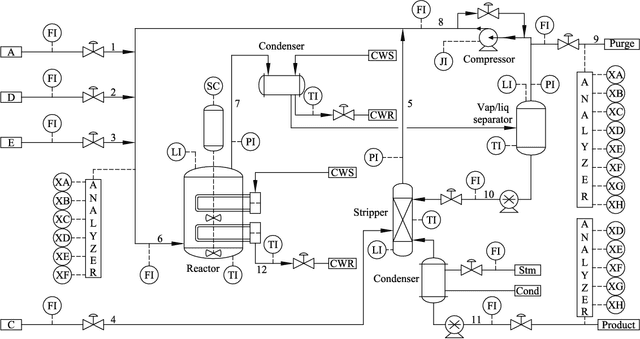
Abstract:By integrating two powerful methods of density reduction and intrinsic dimensionality estimation, a new data-driven method, referred to as OLPP-MLE (orthogonal locality preserving projection-maximum likelihood estimation), is introduced for process monitoring. OLPP is utilized for dimensionality reduction, which provides better locality preserving power than locality preserving projection. Then, the MLE is adopted to estimate intrinsic dimensionality of OLPP. Within the proposed OLPP-MLE, two new static measures for fault detection $T_{\scriptscriptstyle {OLPP}}^2$ and ${\rm SPE}_{\scriptscriptstyle {OLPP}}$ are defined. In order to reduce algorithm complexity and ignore data distribution, kernel density estimation is employed to compute thresholds for fault diagnosis. The effectiveness of the proposed method is demonstrated by three case studies.
 Add to Chrome
Add to Chrome Add to Firefox
Add to Firefox Add to Edge
Add to Edge